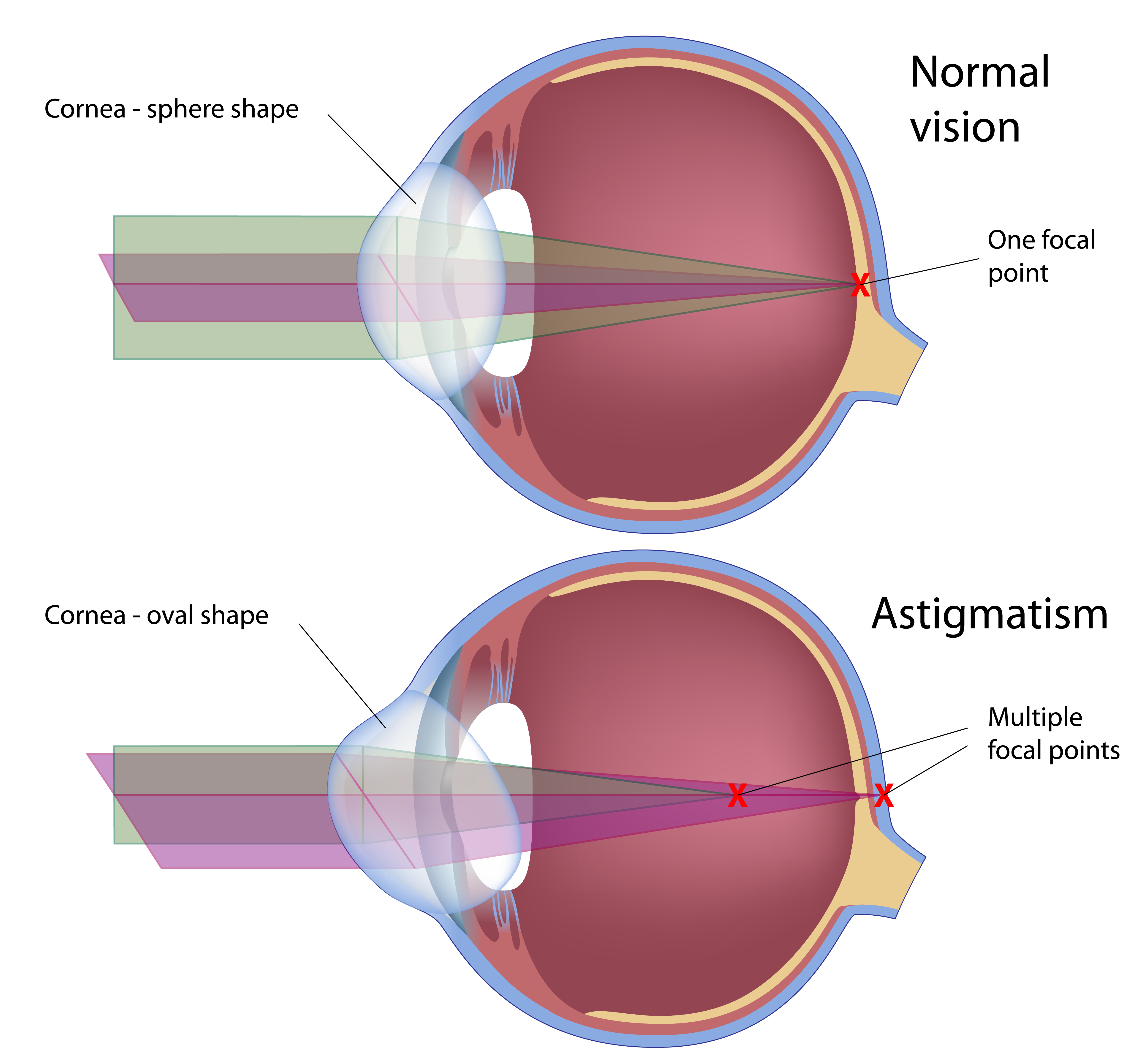Updated on October 21, 2024
Do You Need Glasses for Astigmatism?

Vision Center is funded by our readers. We may earn commissions if you purchase something via one of our links.
Do You Need Glasses for Astigmatism?
Some people with mild astigmatism don't need correction. However, astigmatism is commonly accompanied by other refractive errors like nearsightedness and farsightedness. These conditions require glasses.

You will need prescription glasses to correct astigmatism if it's affecting your sight. This often happens with some cases of mild astigmatism or moderate to extreme astigmatism.
Glasses for astigmatism have cylindrical and single-vision lenses that properly refract light to the retina. They're customized to correct astigmatism in both eyes, which aren't always the same.
Where to Buy Glasses + Contacts
Best Overall: Warby Parker
Fastest Delivery: EyeBuyDirect
Also Great: Liingo
Best Place to Buy Contacts: Discount Contacts
When To Get Astigmatism Glasses
Consult your eye doctor if you struggle with daily activities, including:
- Driving
- Reading
- Doing computer work
Symptoms that indicate the need for astigmatism correction include:
- Blurry vision
- Headaches
- Squinting
- Eye strain
- Reduced night vision
Other signs you may need glasses include:
- Double vision
- Needing more light to read
- Losing your place while reading
- Distortion in your vision
- Halos when driving at night
The eye doctor can examine your eyes to ensure you do not have serious eye conditions that may cause similar symptoms.
Listen In Q&A Format
Do You Need Glasses For Astigmatism
Vision Center Podcast
Best Types of Glasses for Astigmatism
There are different types of materials used for your corrective lenses. From thickest to thinnest, they are:
- CR-39 (standard) plastic. This type of plastic is the most commonly used material for corrective lenses. It’s lightweight and offers good optical clarity
- Polycarbonate. This type of plastic is very strong and impact-resistant, making it ideal for active people or people with children
- Trivex. This material is made from a urethane-based pre-polymer substance and offers exceptional quality
- High index. These lenses have a higher refractive index while being thinner and lighter
Choosing the right lens type for vision correction depends on the degree of astigmatism. The higher your prescription, the thinner the lens you should choose.
Thinner lenses also tend to be lighter, although Trivex material is lighter than high-index plastic.
Read more about the different types of lenses available at Warby Parker.
Best Lens Material for Each Astigmatism Level
When your eye doctor writes your eyeglass prescription, you will notice a number under the cylinder (CYL) section. This number is measured in diopters (D) and indicates your astigmatism level.
Each level of astigmatism is suited to different types of lens materials. These are:
- Mild astigmatism. 1.00 D or less; suited to CR-39 plastic lenses
- Moderate astigmatism. 1.00 to 2.00 D; suited to polycarbonate or Trivex lenses
- Severe astigmatism. 2.00 to 4.00 D; suited to polycarbonate, Trivex, or high-index lenses
- Extreme astigmatism. 4.00 D and above; suited to high-index
Tips for Choosing Astigmatism Eyewear
Here are other tips for choosing eyewear for astigmatism:
- Anti-reflective coating helps to reduce glare off the surface of lenses.
- A flat frame is easier to get used to for higher astigmatism corrections compared to glasses with more curvature across the front of the frame.
- Visit your eye doctor for an adjustment if you experience dizziness or a fishbowl effect with your glasses. A fishbowl effect is when the sides of your vision seem to bend and look distorted while the center is clear.

What Is Astigmatism?
Astigmatism is a condition where the eye has a slightly irregular curvature. When you have astigmatism, your eye can't focus light properly on the retina, resulting in blurry vision far away and up close.
For many people, astigmatism stays the same or barely changes over time. However, sometimes it can cause your vision to get worse. This depends on your corneal health and whether you have other eye conditions, such as keratoconus, which can significantly affect the stability of astigmatism.
You can correct astigmatism with glasses, contacts, or surgery. Research shows that genetic components and other eye health issues could be involved in this condition. As such, astigmatism may develop in infancy or later on in life.

People with mild astigmatism may not have any symptoms. If astigmatism worsens, you may notice vision problems such as:
- Blurry vision (distance or near)
- Glare or halos around lights
- Sensitivity to light
- Decreased night vision
- Shadows or ghosting of images
- Headaches
- Eye strain and fatigue (particularly while viewing digital devices)
- Squinting
Alternative Astigmatism Treatment Options
If you prefer not to wear glasses, there are other ways to treat astigmatism.
Astigmatism Contact Lenses
Contacts that correct astigmatism are called toric lenses. They are available as:
- Soft contact lenses. Flexible, ideal for comfort, and excellent for low to moderate levels of astigmatism
- Rigid gas-permeable (RGP) lenses. Also known as hard contacts; they are less comfortable than soft lenses but better at correcting corneal astigmatism
- Hybrid lenses. Contacts that are hard in the center and soft around the edges provide better vision and improved comfort
LASIK Eye Surgery
LASIK is a laser eye surgery that corrects astigmatism, myopia, or hyperopia. Typically, LASIK can treat up to 6.00 D of astigmatism.
Read more about LASIK for astigmatism.
Other Refractive Surgeries
Here are other refractive surgeries that can help correct astigmatism:
- PRK (photorefractive keratectomy). Some people with thinner corneas or higher prescriptions are better candidates for PRK than LASIK.
- Refractive lens exchange. This surgery removes the natural lens inside your eye and replaces it with an intraocular lens implant (IOL). These steps are the same as cataract surgery.
- Phakic intraocular lens implant surgery. This involves inserting an IOL without removing the natural lens. The IOL can be removed or replaced later.
Summary
Astigmatism is an eye condition that can result in blurred vision. While some people may not need glasses for their astigmatism, others require them to achieve correct vision.
Always consult a professional to know more about your eyewear requirements. They can provide suggestions based on your needs and preferences.
In this article
6 sources cited
Updated on October 21, 2024
Updated on October 21, 2024
About Our Contributors
Dr. Melody Huang is an optometrist and freelance health writer with a passion for educating people about eye health. With her unique blend of clinical expertise and writing skills, Dr. Huang seeks to guide individuals towards healthier and happier lives. Her interests extend to Eastern medicine and integrative healthcare approaches. Outside of work, she enjoys exploring new skincare products, experimenting with food recipes, and spending time with her adopted cats.





